Identification of Paleo-depositional Setting--Nigerian Continental Slope
(after Nissen et al., 1999)Nigerian Continental Slope--144 ms below sea floor
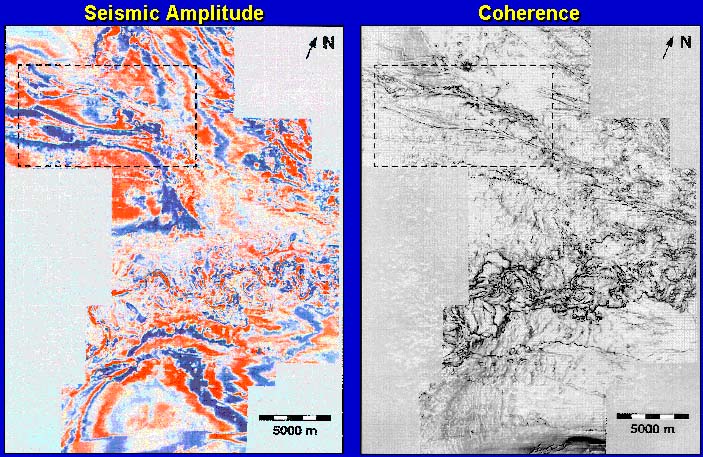
Seismic amplitude horizon slice (left) and coherence horizon slice (right) 144 ms below the sea floor on the Nigerian continental slope. In addition to a conspicuous channel-shaped feature, which is visible in the lower half of both images, the coherence slice shows numerous narrow, curvilinear features, which are not readily apparent on the amplitude slice. Interpretation of these features is key to understanding the depositional processes which formed the more conspicuous channel-shaped feature, which is not a channel at all, but rather a channelized debris flow!
Nigerian Continental Slope--Coherence--144 ms below sea floor
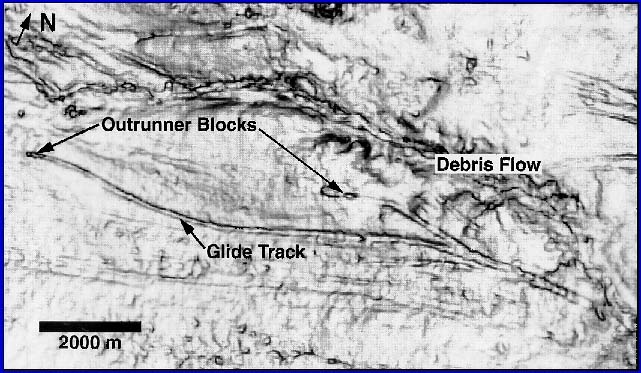
Enlargement of boxed area in previous figure, focusing on the most prominent of the curvilinear features.
Nigerian Continental Slope--Dip/Azimuth--144 ms below sea floor
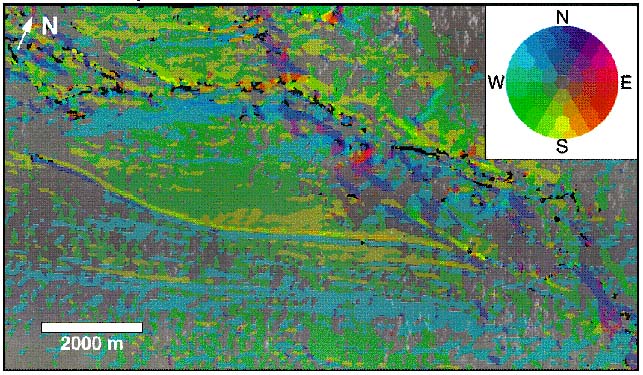
Dip-azimuth slice of the boxed area, which shows that the curvilinear feature is a shallow depression (i.e., the sides dip inward) along its entire length.
Kitimat Submarine Slide
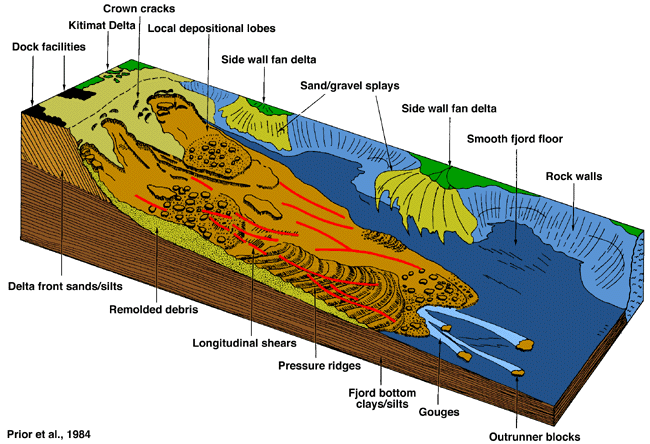
Block diagram of a modern debris flow, which shows gouges (or glide tracks) which are morphologically similar to the curvilinear features on the Nigerian slope. Other debris flow elements, such as outrunner blocks and pressure ridges, are also similar to features observed on the Nigerian slope. Although the scales of the features are somewhat different (e.g., the proposed Nigerian glide tracks are up to an order of magnitude longer than those in the Kitimat submarine slide), there are enough similarities between the features to support the hypothesis that they were formed by analogous debris flow processes.
Nigerian Continental Slope--Vertical seismic section

Vertical seismic profile through the downslope end of the glide track on the Nigerian slope. Note that a subtle outrunner block and a downslope pressure ridge are visible on the vertical seismic.
Schematic diagram of outrunner block emplacement in Kitimat debris flow
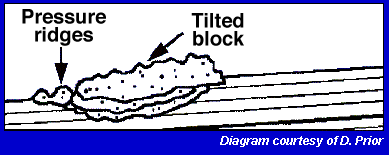
A schematic section through an outrunner block and pressure ridge from the modern debris flow is shown for comparison.
Nigerian Continental Slope--Coherence--144 ms below sea floor

The recognition that debris flows were the predominant paleodepositional processes on the Nigerian slope allows the complex depositional features seen on the coherency slices of the area to be interpreted in the proper context.